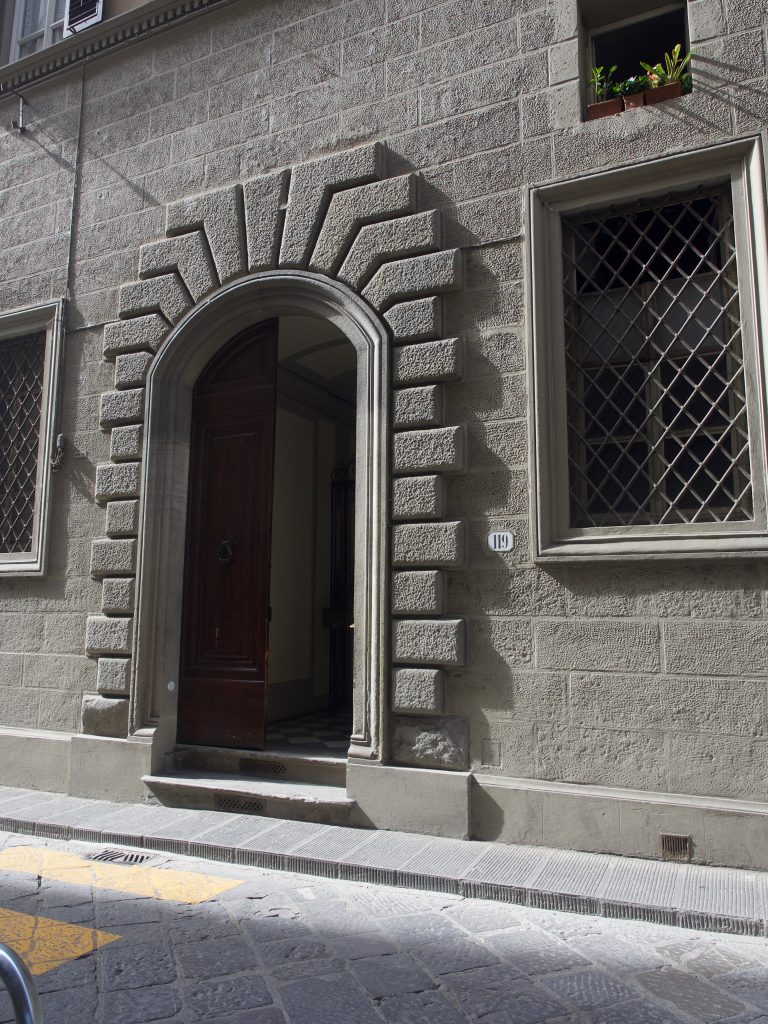
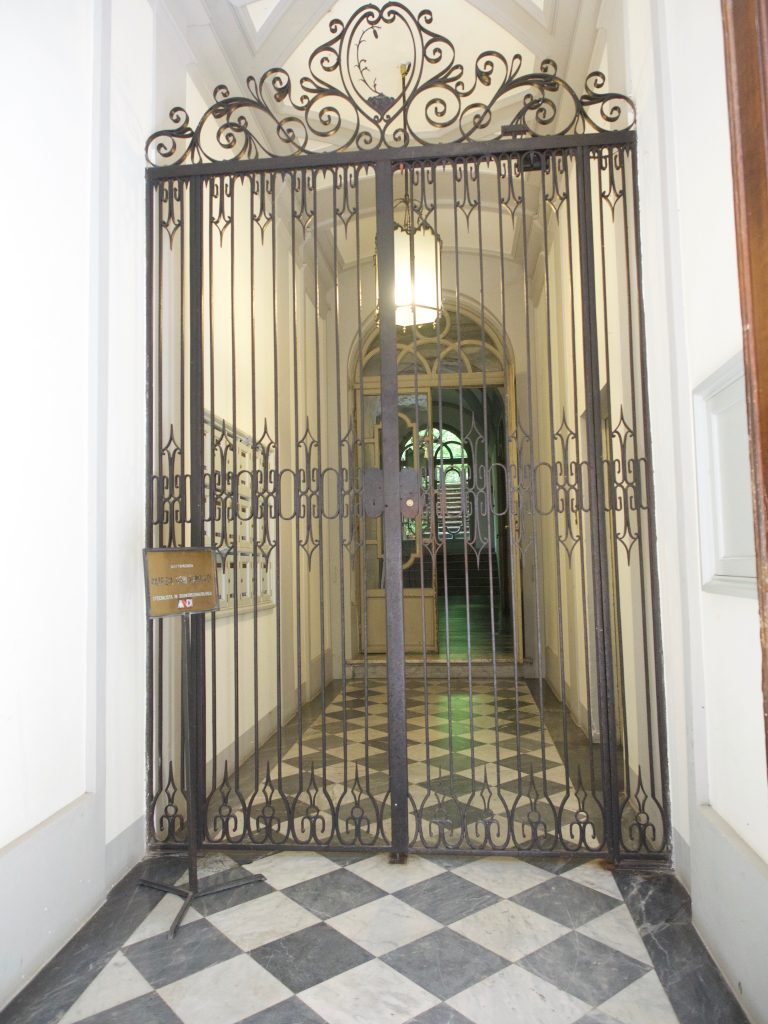
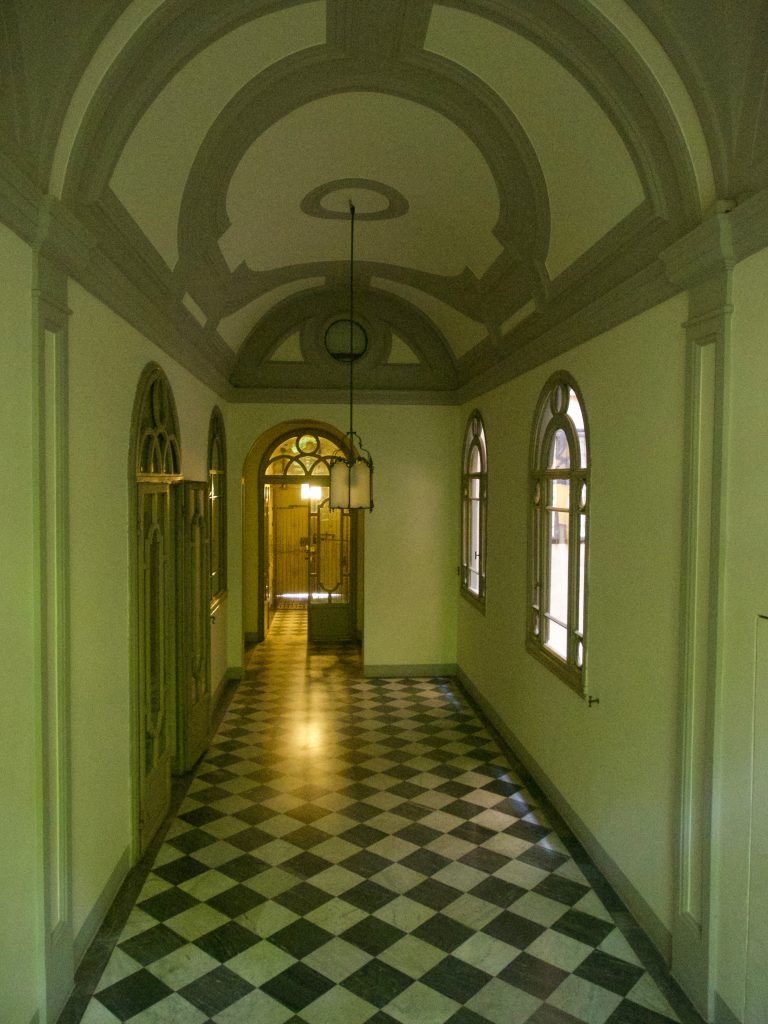
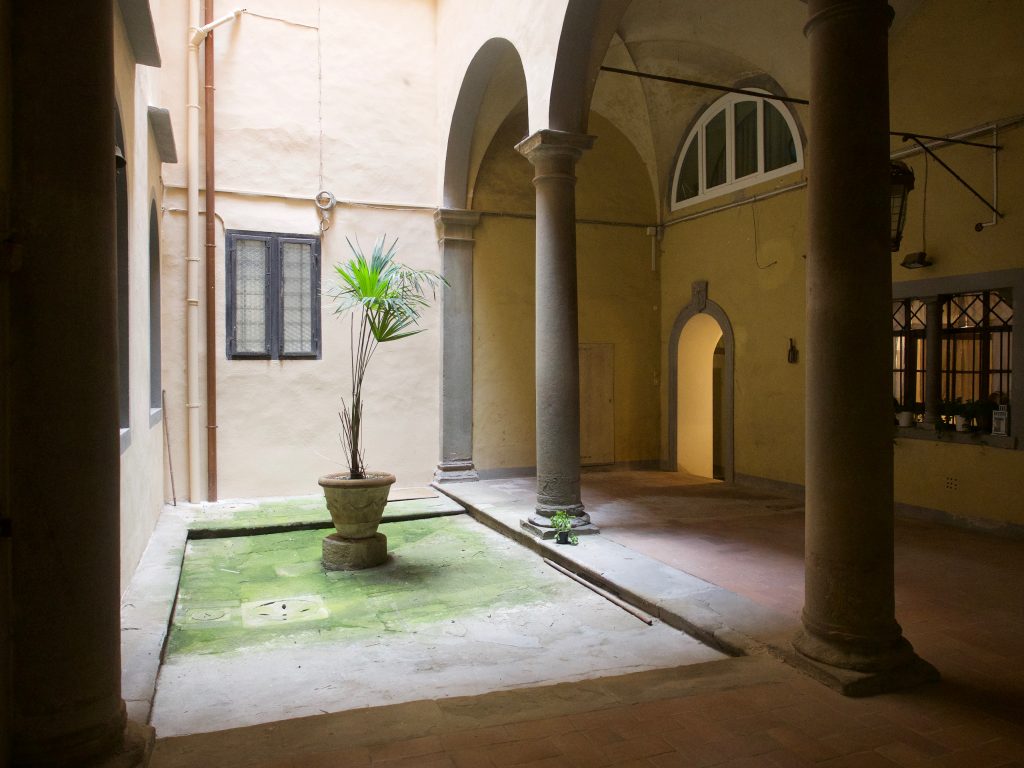
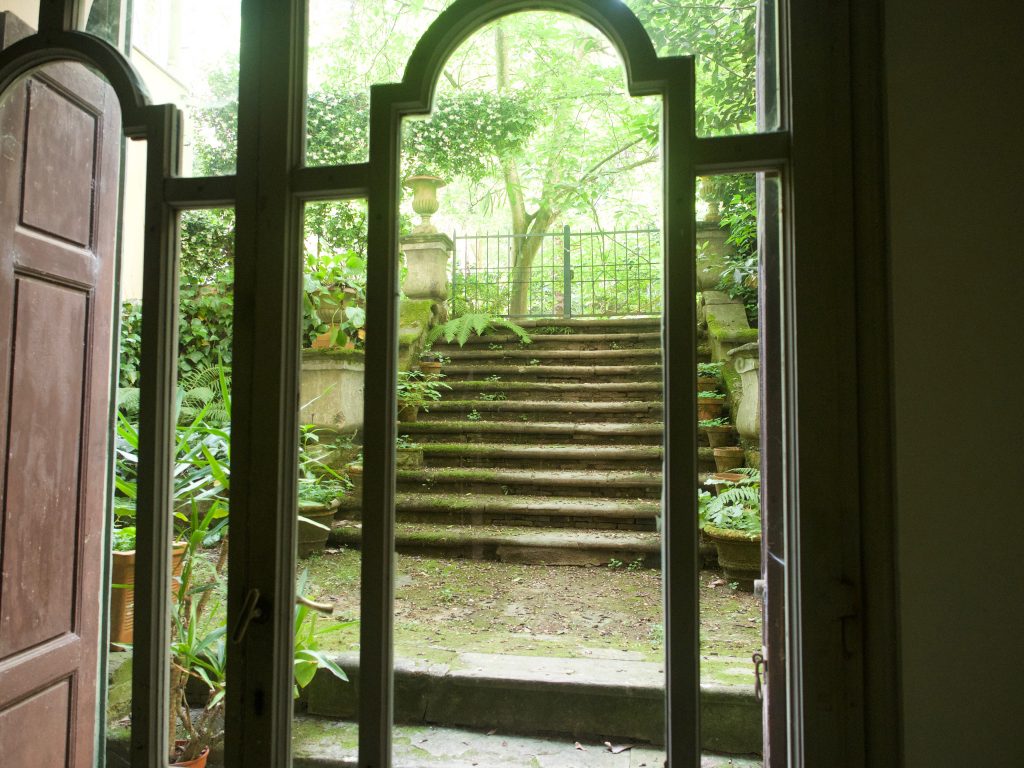
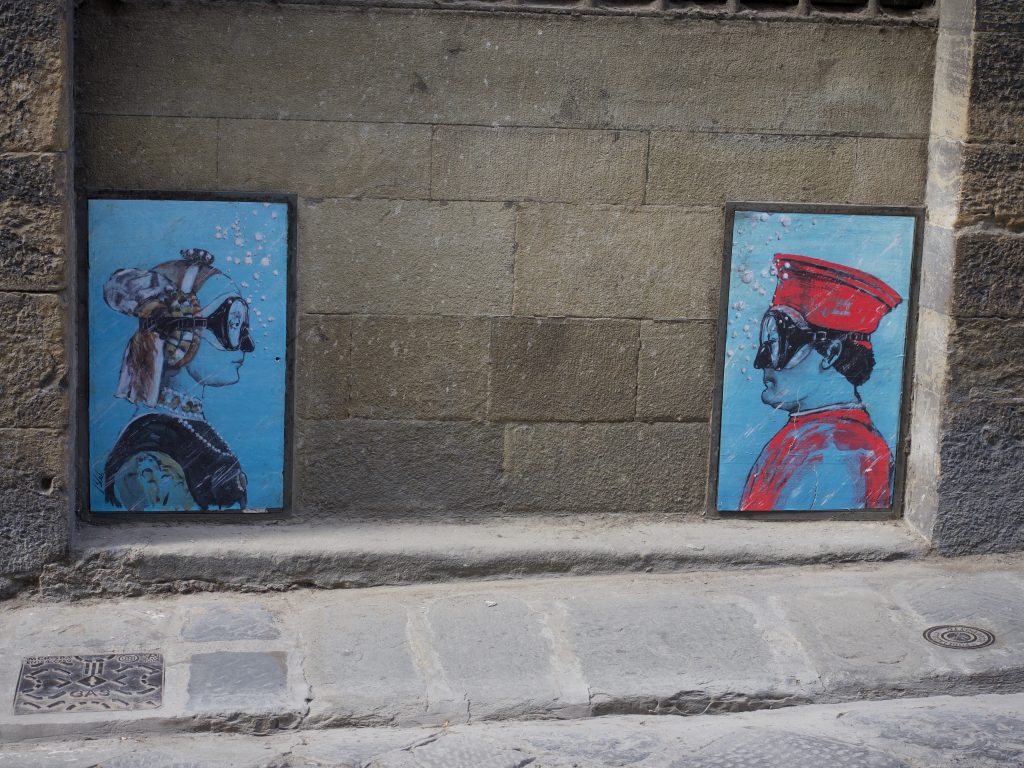
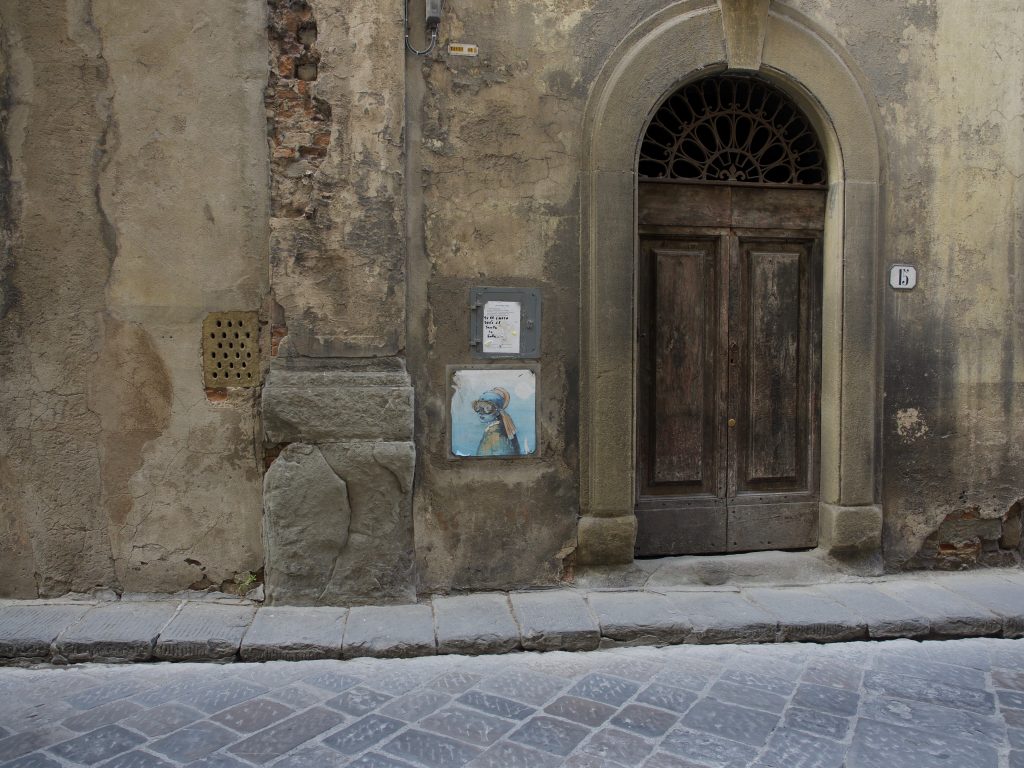
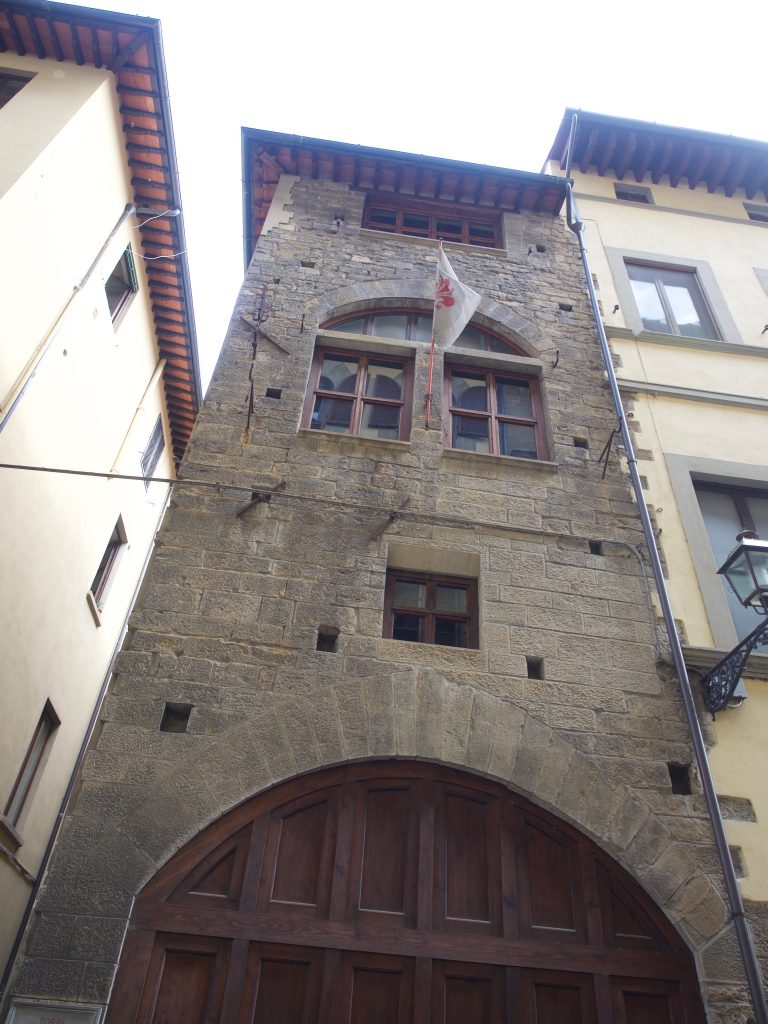
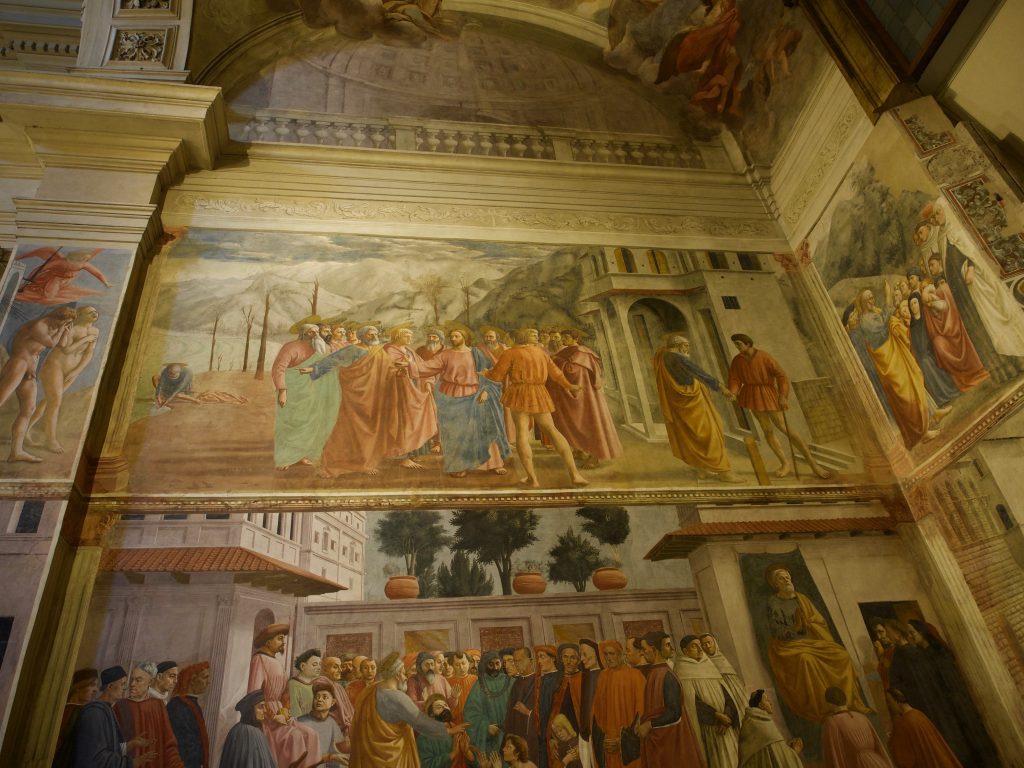
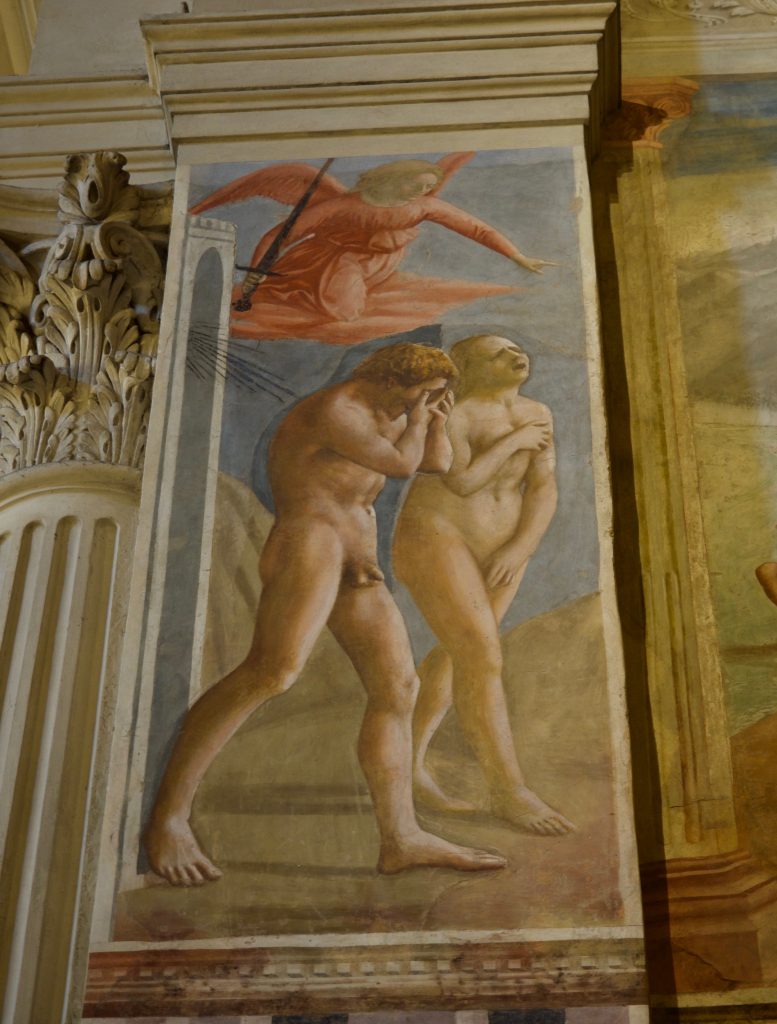
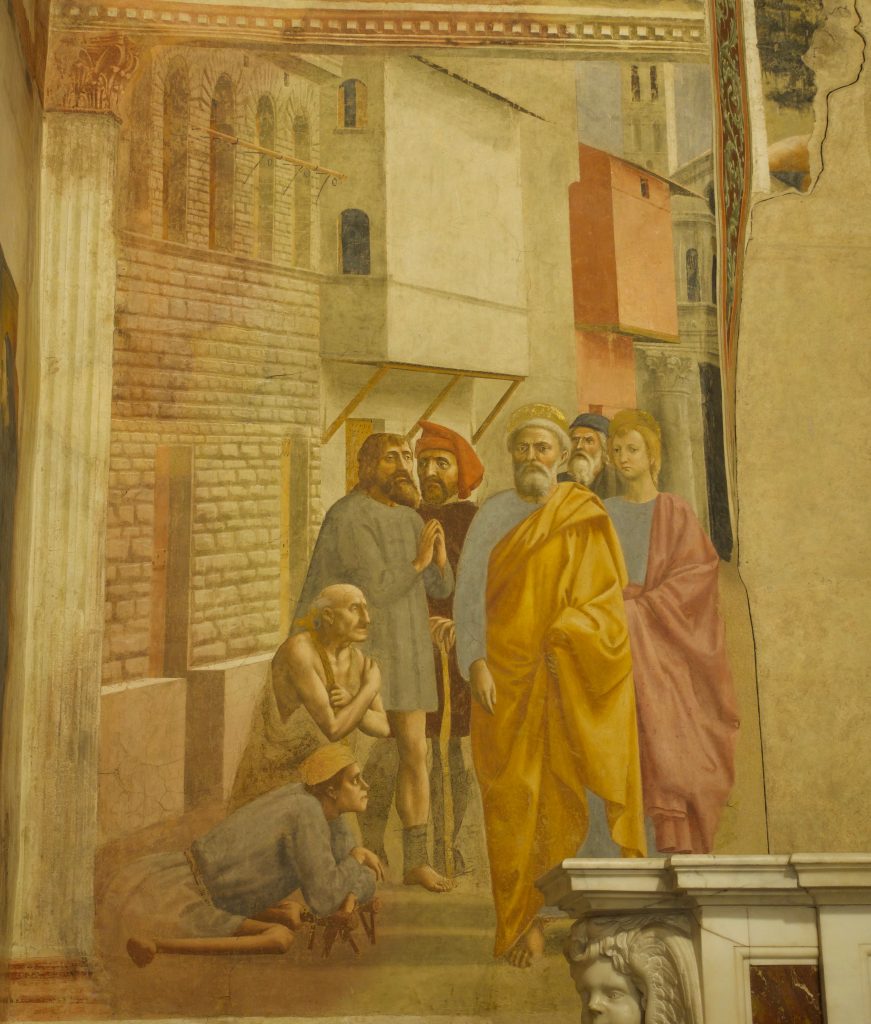
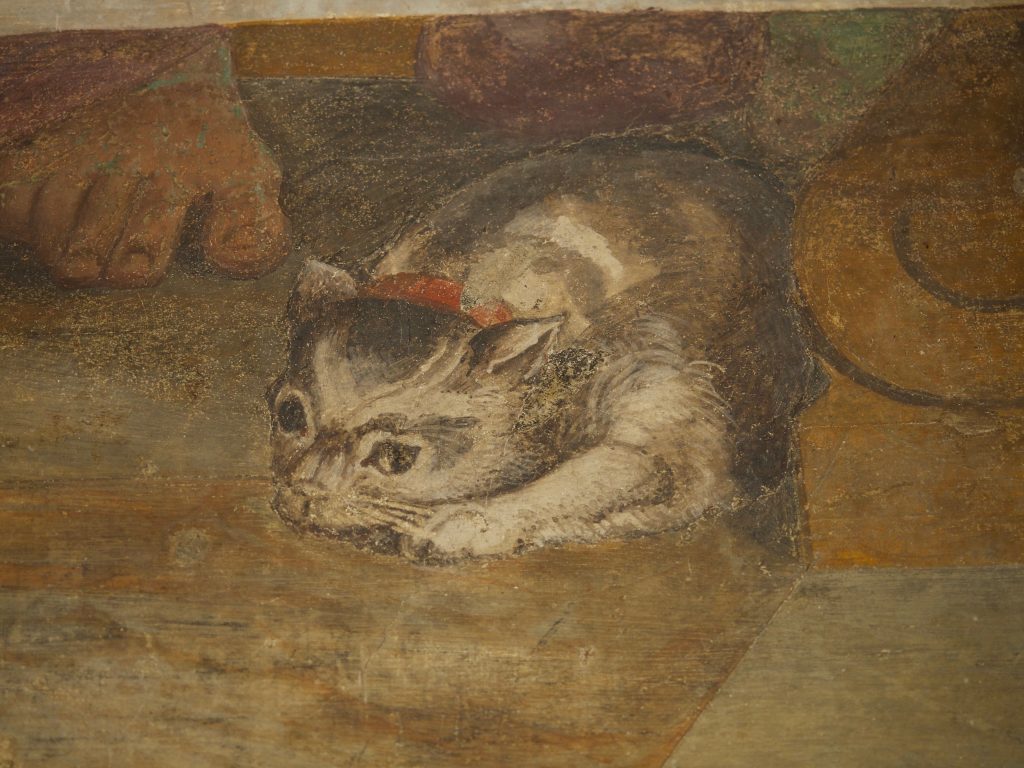
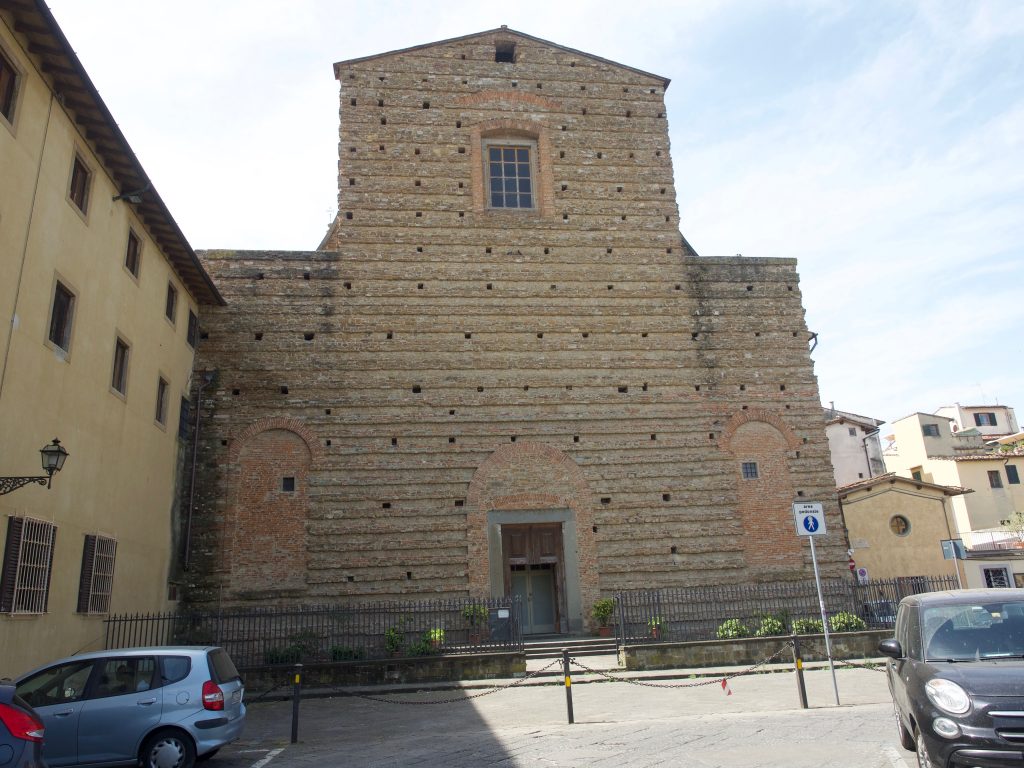
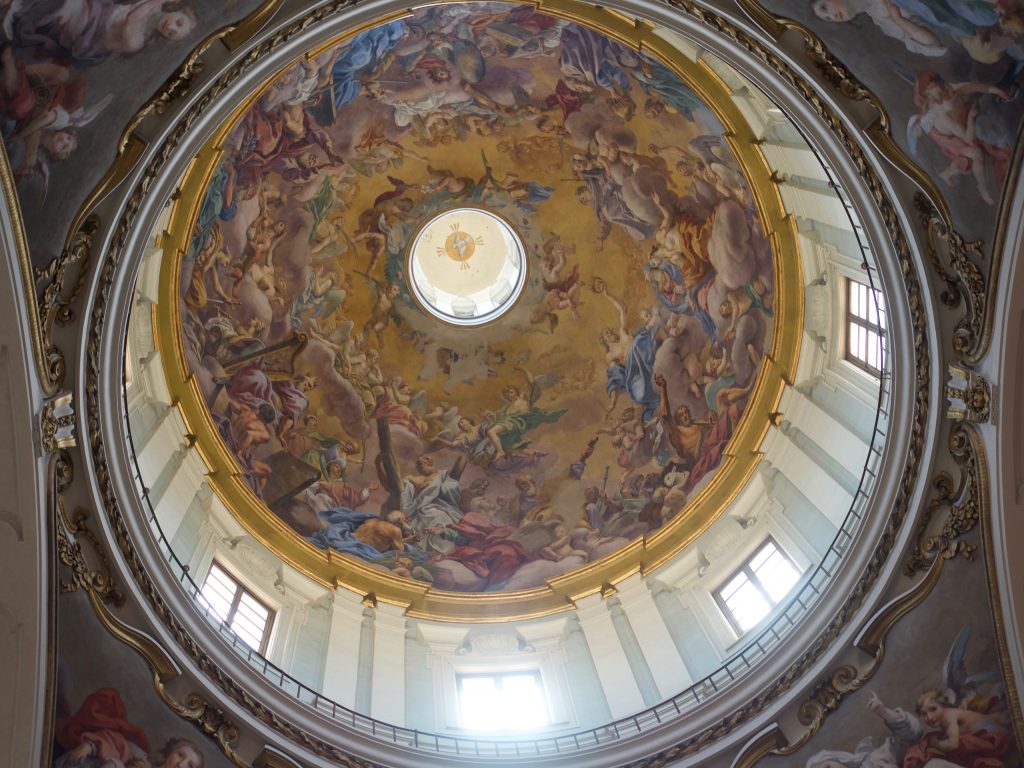
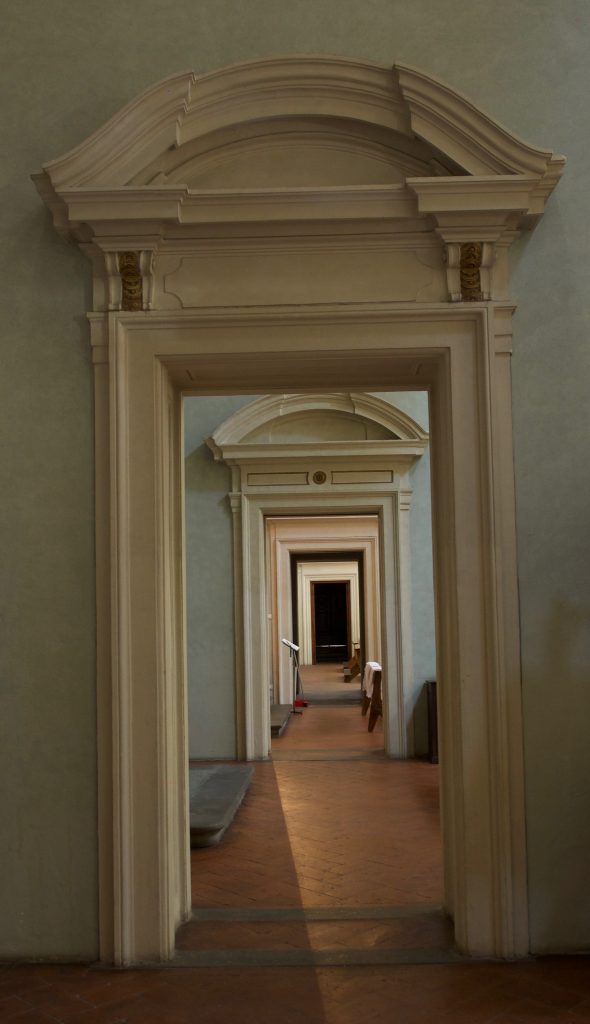
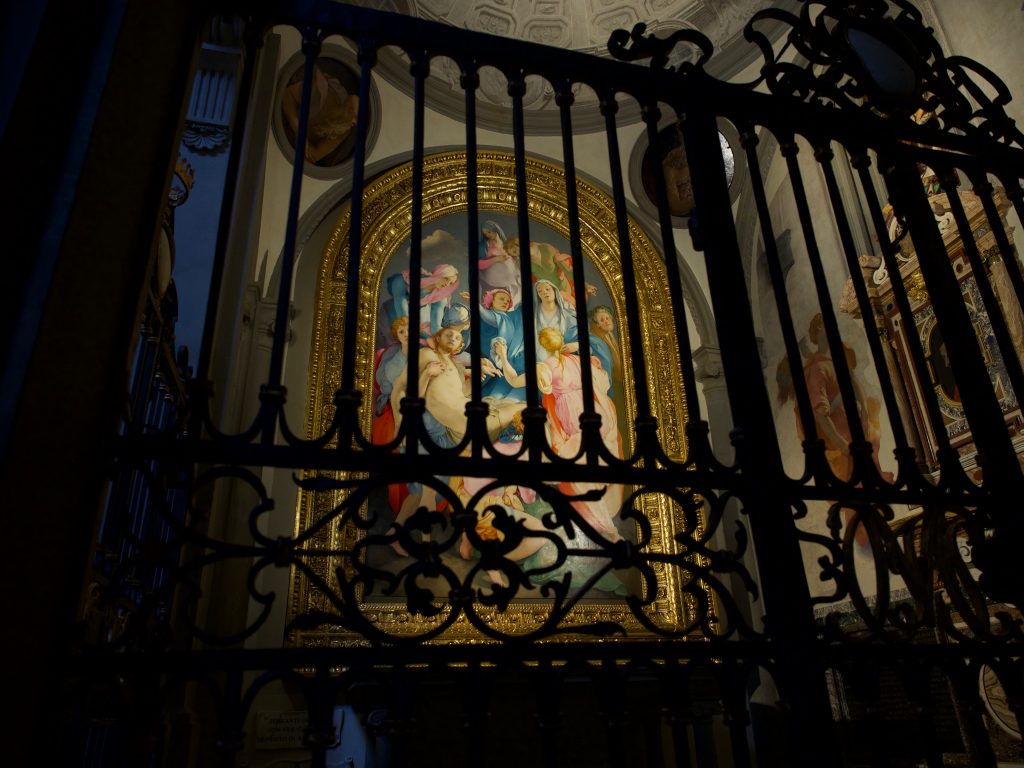
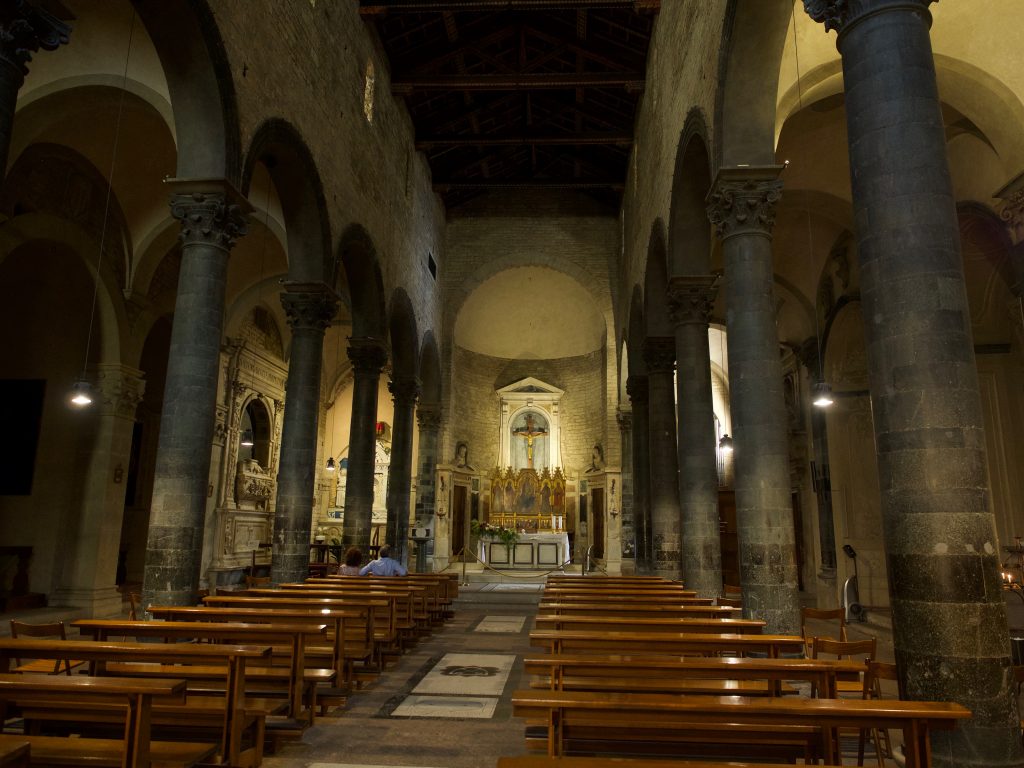
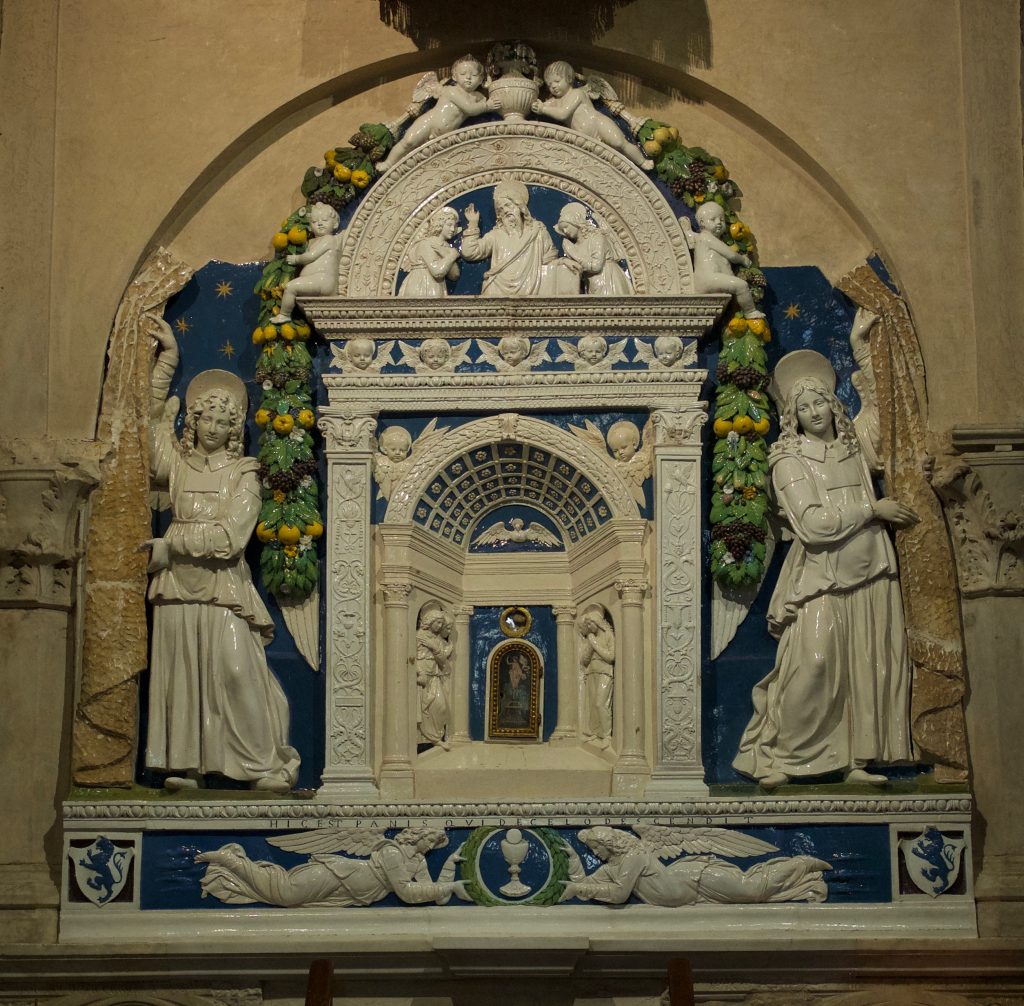
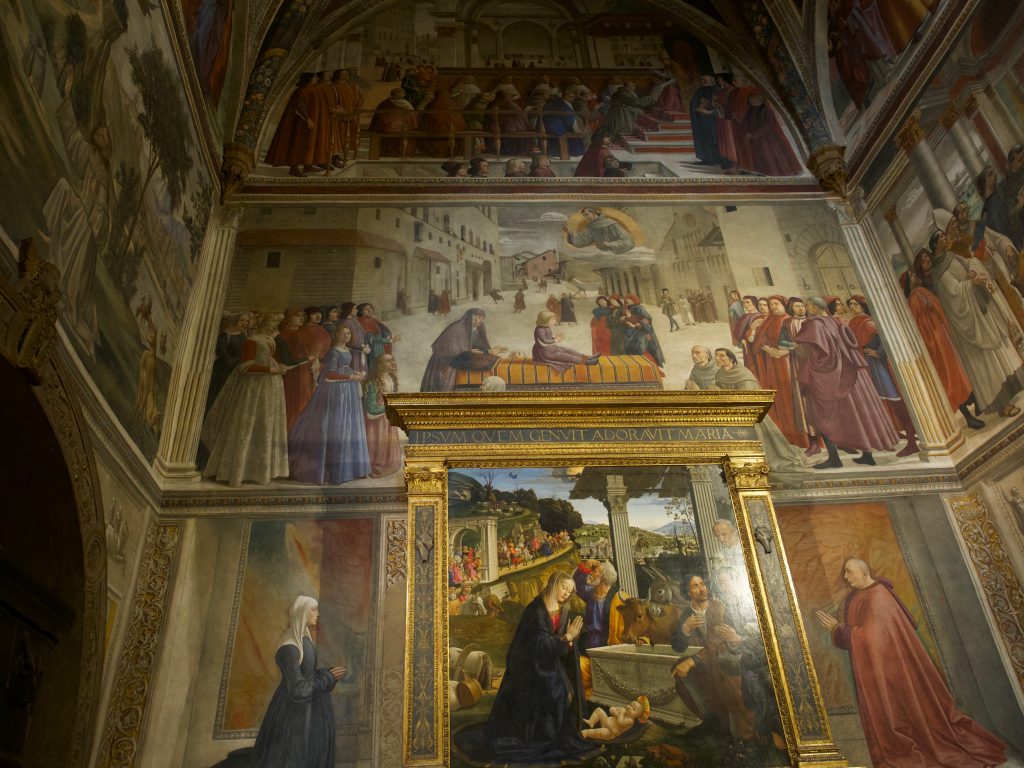
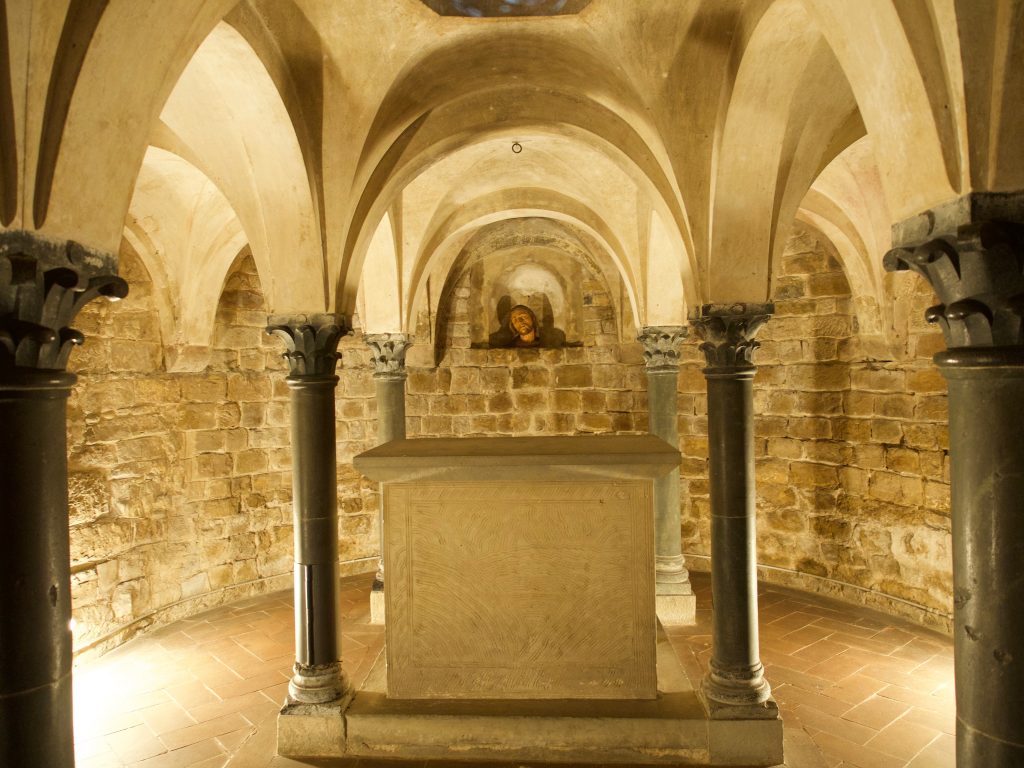
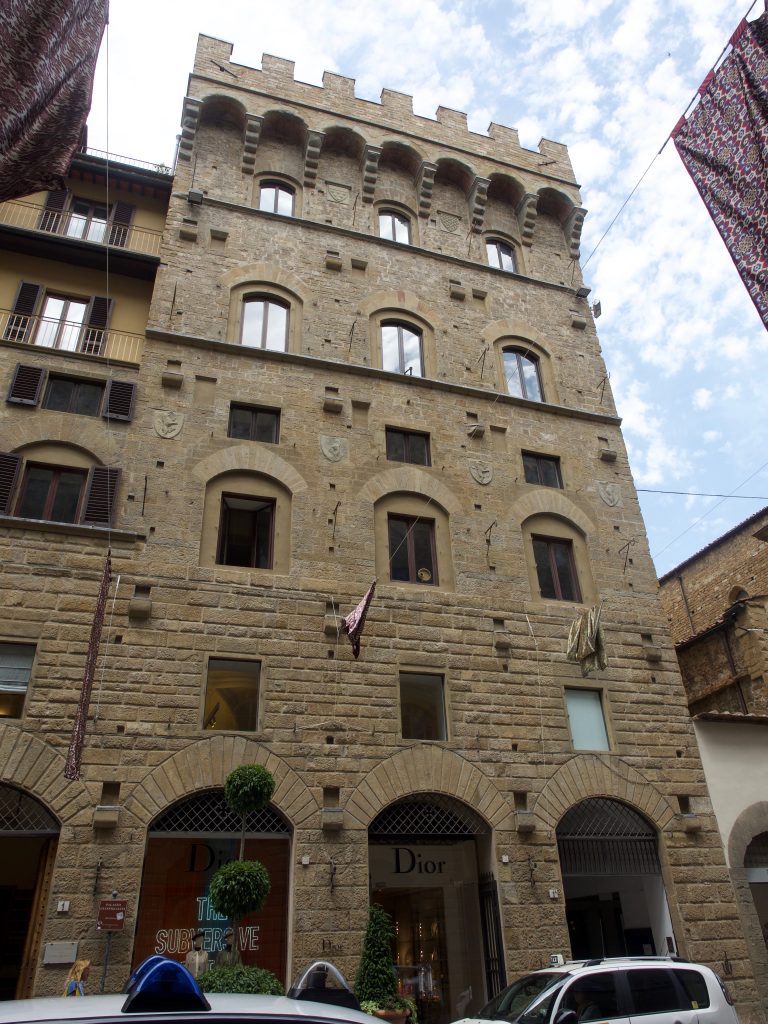
This was our last partial day in Florence, and we used it well! We had breakfast with an extra croissant/cornetto that I got at our trusty supermarket down the street as I was also taking our plastic and organic waste to the bins. I fixed us a lunch for the road for later that involved almost all of our remaining food, although we left a half jar of mustard, a little bit of honey, and a mini packet of cream cheese. We really did well having breakfast and dinner out of our mini kitchen, and I should really write a book about how to cook in makeshift arrangements, which I did in Rome and especially here in Florence. We packed and cleaned up a little (they better give us our deposit back! I do think it was cleaner than when we moved in (except for towels and sheets), dropped off our luggage at the owners of the apartment, and then set out for our last round of Florence streets and churches (and a few more family towers).
First we walked by the house on the via de’Bardi where, according to a website of famous locations in Florence, Eliot imagined Romola and her father to live (No. 30-32). Turns out that in no. 28 next door, the famous us art historian John Pope Hennessy, who wrote the definitive biography of Fra Angelico (which I did not read) DID actually live and die (in the 1990s). He had a big marble plaque on the house (just like Fra Angelico at the monastery near Fiesole) because apparently Florence made him an honorary citizen. But for good measure, there was also some cool street art—all over town, there are posters of famous portraits, xcept with diving masks and blue backgrounds, so we found a couple we liked on the via de’Bardi: the Girl with the Pearl Earring and the Duke and Duchess of Urbino (Federico da Montefeltro and Battista Sforza, as painted by Francesca) and his wife (we found them again later NOT facing each other).
Then we made our way, finally, to to S. Maria del Carmine, where the Brancacci Chapel is with its famous frescoes from the life of St. Peter by Masaccio and Masolino (the lower tier done over by Filippino Lippi). In my Italian Renaissance survey, I had learned a lot about Masaccio, who was only in his 20s when he painted these frescoes in the 1420s, and so far ahead of his time with the way he represented space and also human emotions, so I was very excited to finally see it, especially Adam and Eve expelled from Paradise and the Tribute Money. Although I was not excited to see I after our FirenzeCards expired because we were 15 minutes too late for entry the other day. Oh well, we did get our money’s with our of the card even without it, I am sure. And the frescoes were beautiful, although I have to find out why a broken column from a now-gone double gothic window was left standing underneath a classicizing pediment from the early Baroque. The rest of the church was not so exciting, but there was a quiet cloister and a refectory with a Last Supper fresco by Allori that seemed transferred from somewhere else. But it did have the traditional Last Supper Cat, so we took a photo of that, of course.
We then stopped at several more churches, just because they were on our way from A to B, and each one had surprises to offer. On the Oltrarno side, a block from the Carmine, was S. Frediano in Cestello with its truly surprising architecture. It’s one of the no-facade churches but the inside was very high baroque. Much of it was done There was a main cupola with lantern over the apse (unsurprising), but each side chapel along the nave had its own little cupola and they had doors from each to the next, and the chapels facing each other had symmetrical designs above the paintings on their back walls.
Then we made a second stop at S. Felicita with the Pontormo Deposition, which was a bit frustrating because a large group of Dutch students had to listen to one of their group stumble through his presentation on the painting, with Q &A, which took 20 minutes, during which they hogged the space completely. And all I wanted was a photo of the cast iron gate that keeps all visitors out of the space where John Shearmann says we should be. 🙂
Then, once more across the river, we looked for the former pension Suisse on the via Tornabuoni (# 13), where George Eliot stayed in 1860, and which had clearly been on the side of a Palazzo right by the Ponte Santa Trinita, with the church S Trinita right on the other side. This is clearly prime real estate now, and hard to imagine as even the ritziest Swiss boarding house! Since we were right by it, we went into S. Trinita for good measure, and admired a beautiful Ghirlandaio altarpiece in oil and the frescoes all around it (also by Ghirlandaio) in one of the side chapels, the Sassetti chapel (apparently some of the very little that was left after a fire destroyed the early baroque decor, already a do-over of earlier elements of the church). The rest is from the 1770s and pretty annoying, again complete with illusionistic ceilings etc. But we also discovered a cute little early medieval church, Santi Apostoli, from the 11th century, with with a very simple nave, tucked into the very middle of a block, surrounded by alleys, but with a tiny campanile, and an impressive glazed terracotta Madonna by della Robbia.
By now , we were pretty generous with our Euros to light up specific paintings or dark corners, like the crypt at Santa Trinita. Maybe to compensate the guards, especially the one who was trying to close up Santi Apostoli at noon with four tourists still milling around? Penance for shooting many forbidden photos from the hip? Mark certainly did that for me and I am very grateful! (Trinita really didn’t want us to take pictures, one of the few churches in Florence where it’s not allowed.) Anyway, we were glad we got to see these additional churches. But the question still remains how even a wealthy community like Florence during its peak period from 1400-1700 (give or take) could have supported so many churches per square mile!
It was nearly 1 pm by the time we walked by Ponte Vecchio one more time (I am not going to miss that traffic on the streets directly along the river!!!!) and to our landlady’s building down the street from us, to retrieve our luggage from the concierge and have who I think is actually the woman’s maid show us our bus station. We got the briefest glimpse of the sumptuous high-ceilinged apartment in the historic palazzo at 99 via San Niccolò, and that was a far cry from our damp piano terre cave… but we did make it work, and I did have fun living in an old ramshackle building with a courtyard unbelievable entryways and a secret garden!. A little less damp would have been nice, not to mention being able to steam my milk for the espresso I finally learned to make!
Getting back to the bus station at Via Costanza turned out to be long and hot—we had to wait forever for a bus, sit/stand in that for a long time with many people, then get to the right tram and again, stand in it with many people, with a couple of temporary delays on the way. Then we had to wait in the hot sun for the FlixBus (where we finally had our lunch). The bus was late coming in and then was stuck in a traffic jam for another hour on the way out of town. But we were back in the road to Rome! We finally got there with about an hour delay, and then took the bus to our last “home” in Italy, another guest house, roughly in the same quarter as the other one, but closer to the river, in a modern building (I would really like to know when it was built, it has that ultramodern futurist 20s feel, but might be much later). Our room is by far the most hotel-like and functional room we’ve had, with nothing broken or wobbly or inconvenient, but it is also utterly charmless, and has no view even as we are a stone’s throw from the Tiber.
We basically threw our stuff in the room, washed our hands after the sticky afternoon, and then went out to find some dinner. We found a really nice restaurant with outdoor seating a few blocks south of us, and I had the best pizza I’ve had since we got here, plus a lovely all-greens side salad, while Mark had very good pasta Bolognese. We were stuffed enough that we forewent our usual gelato, even though the BEST gelateria of Rome was just right there (it did have about 20 people waiting in line, so that was partly why we postponed until tomorrow). We walked home along the banks of the river and wrapped up the day with showers and the usual photo selection session.